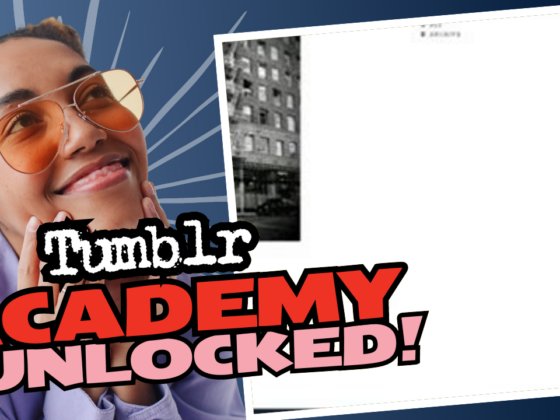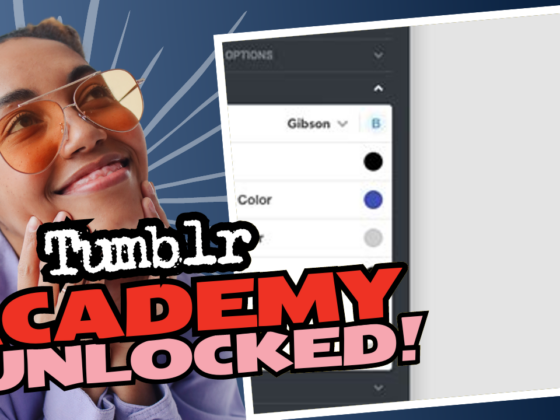What is Coquette Tumblr? Unraveling the Aesthetic
If you’ve ever scrolled through Tumblr or any social media platform for that matter and felt a whirlwind of femininity mixed with a touch of nostalgia for the 2000s, there’s a good chance you’ve bumped into coquette fashion. But wait—before you start confusing coquette with lolita (which, let’s be honest, is like mistaking a cupcake for a doughnut), let’s dive into the colorful world of coquette and clarify what it is and what it isn’t.
The Rise of Coquette: A Brief Overview
Coquette fashion took flight during the Tumblr era circa 2014. Imagine a vibrant combination of flirty outfits that scream “I woke up like this but also spent two hours perfecting my eyeliner” with a sprinkle of sweet yet melancholic charm. Inspired by pop culture figures like Lana Del Rey and tinged with historical imprints that are far less dreamy (yes, I mean the infamous novel we shouldn’t mention), this aesthetic cleverly weaves elements of femininity and whimsicality, often venturing into not-so-innocent territory. Think of it as a little black dress for those who want to add a splash of bubblegum pink.
But hold your horses! Let’s not confuse coquette with lolita fashion. Lolita, a subculture in its own right, is a strict, sophisticated style shrouded in rich history. It’s all about adorable skirts, petticoats, and hours of shopping for the perfect lace. Coquette is more like that friend who shows up to the brunch in a mini skirt, dainty blouse, and a slight smirk, whereas lolita is the one arriving with a full Victorian gown, looking like she’s just stepped out of a time machine. They do share overarching themes of femininity, but that’s pretty much where the parallels end.
The Coquette vs. Lolita Debate: Why It Matters
The fervent back-and-forth over whether coquette can or should be labeled as lolita often boils down to one key point: misrepresentation. Lagging behind in this debate is the painful history of misnomers and misapplications that can warp cultural identities. The lolita community has fought hard to dissociate itself from any controversial implications and deep-rooted stigmas. So when similar aesthetics like coquette begin to take the limelight, it runs the risk of overshadowing those hard-fought battles. When someone says, “Oh, look at that cute coquette dress!” it can feel like a slap in the face to lolita enthusiasts, who are often dealing with misconceptions about their beloved style.
But let’s lighten the mood before you reach for the pitchforks! You can appreciate both styles without pitching them against each other. Yes, coquette has wriggled its way into the mainstream, largely thanks to social media, yet lolita remains a niche circle that’s largely untouched by the masses. While the coquette trend flirts between edgy and pastel, focusing heavily on self-awareness of beauty standards and mental health issues, lolita offers solid principles steeped in history—think of it more as an intricate dance with set rules at a fancy ball.
Can Coquette Achieve Mainstream Popularity? Debunking the Myths
There’s a recurring misconception that coquette could one day undergo a global takeover much like E-girls or baddie aesthetics. While it’s undeniably cute and has gained traction in specific circles, let’s face it: it’s not likely to hit those dizzying mainstream heights anytime soon. Do you know why? Because coquette often comes with a price tag that would make even your average fast-fashion fanatic regret their extravagant purchases.
The core elements of coquette are remarkably layered and costly, with many enthusiasts digging deep into their pockets for quality pieces that accentuate the aesthetic’s unique flair. Meanwhile, lolita boutiques can leave your wallet gasping for air, with elaborate dresses that tempt even the most frugal souls. So, no. The widespread appeal that coquette could potentially claim isn’t quite on the horizon, primarily due to that charming little thing called “monetary value.”
Moreover, let’s not forget how difficult it becomes to sport elaborate, voluminous styles like lolita in everyday life. Can you imagine squeezing onto a crowded bus dressed like an elegant princess? Yeah, I didn’t think so. Especially when bags are involved. It’s practically a juggling act! Coquette, with its simpler lines and styles, may seem easier to wear, but most of us will choose our comfort over style when it comes to the daily grind.
Baby, It’s a Coquette World
Coquette fashion is undeniably charming and fun. It thrives on self-expression and has built a community searching for meaning in each flirty outfit. The modern interpretation often merges traditional elements with contemporary aesthetics, creating an irresistible concoction. If you pair a floaty skirt with a vintage crop top and pastel colors, you’ve just become a coquette queen.
However, the influence of coquette fashion rarely escapes the stereotype of “skinny girl” attire, focusing heavily on a specific body type. This creates an unsettling disconnect for many who don’t quite fit the societal mold. In contrast, lolita creates a silhouette that works across all body types—it’s all about how you wear it, not who you are. And while both styles celebrate femininity, lolita promotes modesty and elegance rooted deeply in its lore.
Digging Deeper into the Origins of Coquette
Believe it or not, the historical roots of coquette fashion are pretty fascinating. Influenced by French culture and language, the term “coquette” has been entangled with themes such as childhood innocence, femininity, and emotional complexity. While it might sound like a whimsical fairy tale layer, embedded deeper within the coquette vibes are reflections of lost childhood and turbulent influences of growing pains. In essence, it’s more than just a trendy label—it’s a bittersweet narrative wrapped up in frills and bows.
With that in mind, it’s also critical to recognize that coquette fashion frequently rides the waves of social commentary—straddling the line between adorableness and being a critique of youthful aesthetic vulnerability. You’ll often see references to mental health struggles, identity crises, and even relationships—turning wayward glances into profound conversations.
Conclusion: Coquette, A La carte
In the grand tapestry of fashion, coquette emerges as an invitation to explore femininity in all its diverse dimensions. No, it may never take the limelight like lolita, nor should it be mistaken for it. Coquette offers a refreshing mix of aesthetics that empowers individuals to embrace their inner thoughts while parading with a smile on the outside. Whether you find yourself ensnared in the charming appeal of coquette or are more aligned with the dedicated disciplines of lolita, one thing is for sure—fashion is a playful language that speaks to our collective joys, complexities, and, sometimes, our frustrations.
Ultimately, all styles—be it coquette, lolita, or something entirely different—contribute to an ever-evolving narrative of self-expression. So lean into it, enjoy the colors and textures, and perhaps even consider those cute frills along the way with a sense of humor. After all, in the realm of fashion, the more, the merrier!









